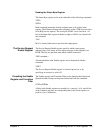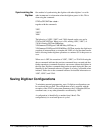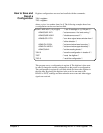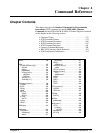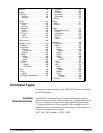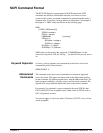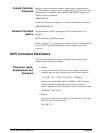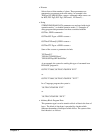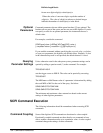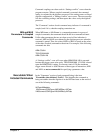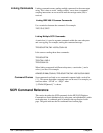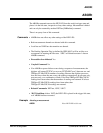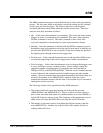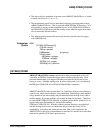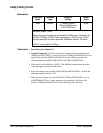
• Discrete
Selects from a finite number of values. These parameters use
mnemonics to represent each valid setting. An example is the
TRIGger[:STARt]:SOURce <source> command where source can
be BUS, ECLTrg0, ECLTrg1,EXTernal1, EXTernal2, ...
• String
STRING PROGRAM DATA parameters are enclosed with single
quotation marks (’) or double quotation marks ("). Examples of
string program data parameters are those associated with the
OUTPut...FEED commands:
OUTPut:ECLTrg<n >:FEED <source >
OUTPut:EXTernal[1]:FEED <source >
OUTPut:TTLTrg<n >:FEED <source >
Some of the <source > parameters include:
"EXTernal[1]"
"SENSe[1|2]:ROSCillator"
"SENSe:SWEep:OFFSet:POINts"
As an example, the syntax for sending this type of command in an
HP BASIC program is:
OUTPUT 70905;"OUTP:ECLT0:FEED ’EXT’"
or
OUTPUT 70905;"OUTP:ECLT0:FEED ""EXT"""
In a C language program, the syntax is:
"OUTP:ECLT0:FEED ’EXT’"
or
"OUTP:ECLT0:FEED \"EXT\""
• Arbitrary Block Program Data
This parameter type is used to transfer a block of data in the form of
bytes. The block of data bytes is preceded by a header which
indicates the number of data bytes which follow. The syntax of the
block header is as follows:
Chapter 4 Command Reference 181



